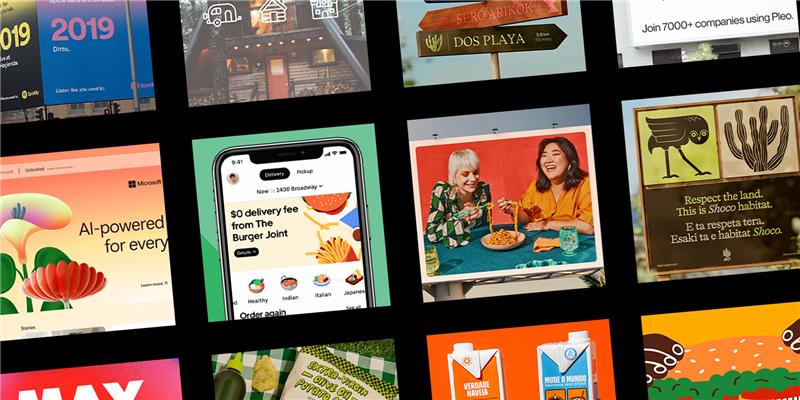
Delight your audiences as they move through the journey to purchase with creative that matches their intent, aligns with strategic insights.

The average attention span of a human being is now just eight seconds, a second less than the attention of a goldfish, according to Microsoft. An increased use of technology has been blamed for this finding and the millennial demographic (those born between 1980 and 2000) are certainly the most impacted as the biggest users of digital devices. This information signifies new challenges for brands and advertisers wanting to capture the attention of a group which is already considered elusive and difficult to market to.
Few millennials can remember life without the internet, smart phones and social media. Now busy, young adults, they are less persuaded, even sceptical, of traditional advertising forms. Their limited attention is constantly being contended for with an over-saturation of media through the digital devices they have become attached to. According to Nielsen’s latest biennial Global Survey of Trust in Advertising, which polled 30,000 online respondents in 60 countries, personal recommendation (trusted to some degree by 81% of UK respondents) remains the most trusted form of advertising or communication, with the credibility gap widening between it and other formats. It now stands alone as the only format trusted by more than 60% of UK respondents. ‘Consumer opinions online’ (58%) is now the second most trusted format (up from fourth two years ago).
So what should advertisers be focusing on to win back the attention of this valuable segment? These six insights provide a key to successful advertising when targeting millennials:
Millennials are a tough group to impress, entertain, connect with and capture the attention of. But one appeal that never wavers is that of a creative and original campaign. Research has shown that half of a campaign’s success is a result of its creative strength.
Be innovative, be beautiful, stand out far from the crowd and aim to create a campaign that people will be talking about for years to come. Partner this creativity with data-backed decisions. What does data tell you about your audience’s digital media consumption or online buying habits that could help shape your campaign? Millienials increasingly want to see campaigns that target them in a personalised way.
Millennials develop resistance when they feel they are being directly marketed to. They value authentic encounters with brands through friends or people they trust. This explains the rising popularity and value of influencers who Nick Blunden, global managing director of The Economist, describes as a subset of millennials called the ‘Gen-narrators’. These Gen-narrators are always looking for interesting and useful content because “they curate, they consume and they create. And that’s what makes them influencers,” says Blunden.
Influencers are fast becoming the new celebrities to the millennial generation. Brands who engage with influencers in the right way, and jointly inspire content, can benefit from their respected voices and platforms which invite brands organically into the habits, passions and lifestyle of their consumers.
Millennials are attracted to the latest social media trends and innovations in digital technology. Brands need to stay on top of these changes and be ready to adapt their campaigns to capitalise on the popularity of new trends. It’s not about choosing the most popular platform. Instead, developing a multichannel strategy allows you to tap into the multiple touchpoints that consumers are commonly engaging with.
One trend worth embracing is virtual reality experiences which are set to be a huge hit with millennials. Research firm KZero estimates 24 million virtual reality units will be in operation by 2018. Marketers would be wise to look at innovative ways to integrate the virtual experience into their future content, anticipating the huge popularity and user potential predicted for this new technology.
Another way to organically encounter millennials is through local marketing. Google has seen an increase in enquiries for words such as ‘near me’, closest’ and ‘nearby’. In addition, a Google 2014 report found that 18% of local searches on smartphones led to a purchase within a day. And 61% of smartphone users say they’re more likely to buy from companies whose mobile sites or apps customise information to their location. Having the world at their fingertips through digital technology has made immediacy and relevancy commonplace for millennials and local marketing feeds this hunger for instant gratification.
Subscribe to our monthly newsletter.
Marketers should determine how to become visible when consumers are searching for product information, business locations or places where they can connect with brands such as theirs.
Social media and instant access to online news has helped shape millennials into a socially aware demographic. They are a diverse group that care about issues such as equality, sexuality and politics. A new consumer mindset can be seen emerging from these ‘everyday activists’. They feel compelled to do their part to protect democracy and humanity and this plays into their consumer choices.
A 2017 Deloitte survey showed that 76% of millennials regard business as a force for positive social impact. This means consumers are looking to the brands they choose to help support and achieve their social motives. This gives marketers an opportunity to utilise their product strengths to connect with customers in ways that are meaningful and that partner with them in making a difference in the world. Millennials are on the lookout for companies that genuinely care about the issues they are concerned about. Building these values into a brand’s marketing strategy is very likely to catch the attention of a millennial.
In April 2015, Google changed its search results to prioritise websites which were mobile phone friendly. This was due to an increased use of smart phones to access sites, with millennial consumers being a major contributor to this rise (87% of millennials have their phone by their side night and day, says Mitek and Zogby Analytics). Making brand websites very mobile-friendly is a must, especially if you’ve invested a lot of money in driving customers there in the first place.
In particular, millennials enjoy watching videos on their mobile devices. A report from Ooyala says 46% of all videos played in Q4 2015 were on mobile devices and this is again attributed to millennial habits. This highlights opportunities for brands to engage millennials through captivating digital video. Facebook’s autoplay, that automatically plays a video which is passed when scrolling, offers video makers a good chance to capture their audience’s attention. “You have maybe the first three seconds to stop people in their feeds to get them with a piece of content,” explained Trevor Johnson, the Facebook’s global agency director. “After that, they can either watch five seconds or 10 minutes.” He advised brands to make the most of the first four, eight and 10 seconds of their video content.
Delight your audiences as they move through the journey to purchase with creative that matches their intent, aligns with strategic insights.
Delight your audiences as they move through the journey to purchase with creative that matches their intent, aligns with strategic insights.
Subscribe to our monthly newsletter.